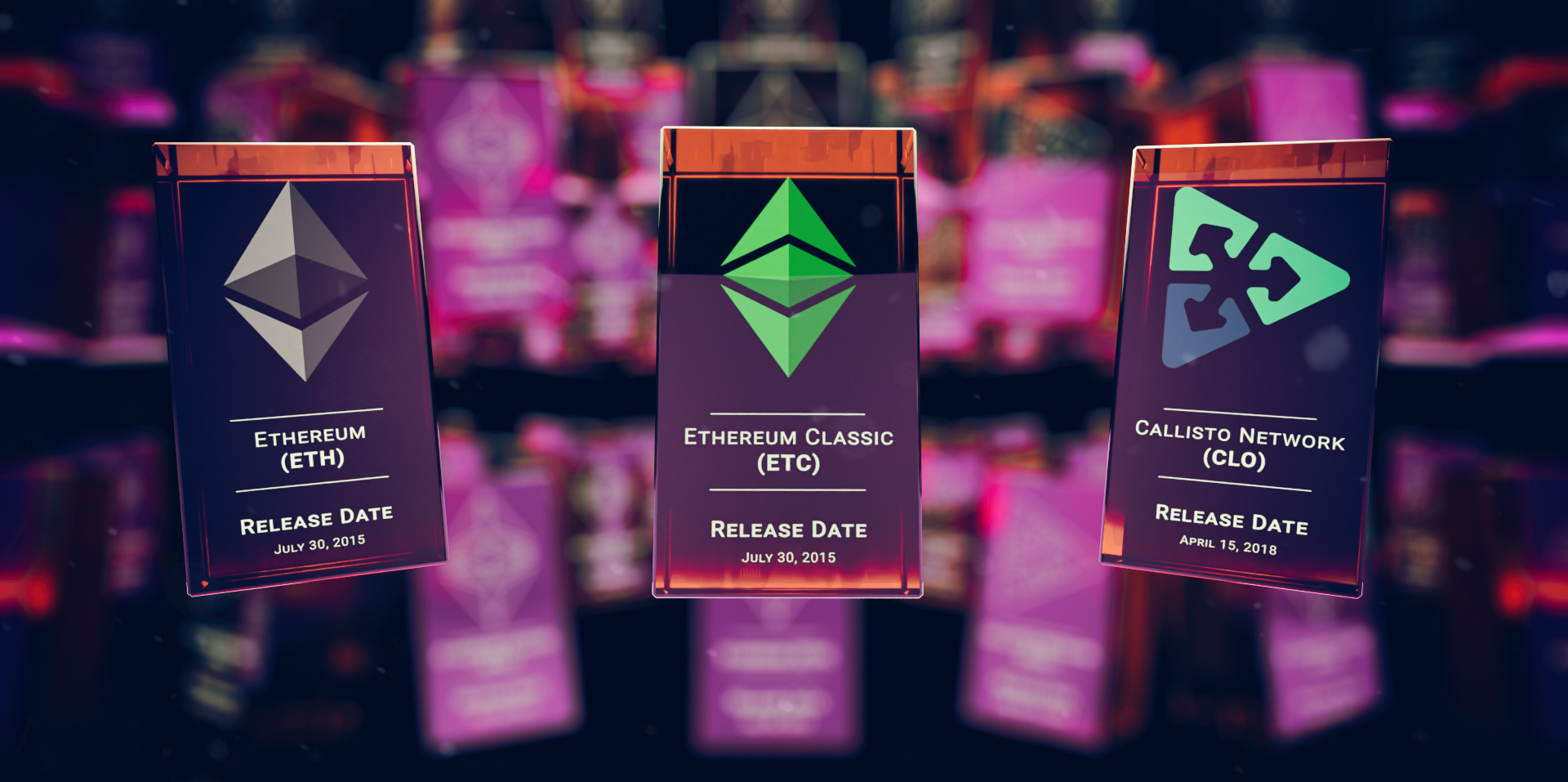Ethereum, Ethereum Classic and Callisto Network, a Common History

Ethereum, a Hack and a Hard Fork
During the TheDAO hack, the hackers managed to steal a part of the funds. Under pressure from the community, the Ethereum developers agreed to implement not only updates to prevent such hacks but also to restore the blockchain to the condition it was before the Hack.
When the Ethereum network hard fork took place on 20 July 2016, some node owners did not support the chain rollback because of the blockchain's "immutability" violation. Instead, they continued to support the original blockchain, resulting in two independent networks and two blockchains being maintained; Ethereum Classic was born.
The notion of an immutable blockchain enables some members of the Ethereum Classic community to claim that Ethereum Classic is the original Ethereum. Subsequently, the Ethereum Classic developers changed the monetary policy, reducing the emission from infinity to 210.7 million ETC coins. They also reduced the "difficulty bomb" and introduced several innovations, including those developed for Ethereum.
Ethereum Classic Protocol Improvements
Ethereum Classic is based on a democratic and somewhat complex system for proposal submission and voting. As a result, the process of discussing and voting on proposals can take several months, as well as their approval for deployment in the network.
Ethereum Classic's structure presents both strengths and weaknesses. On the one hand, there is no way for a single person to control the network and decide independently. Still, on the other hand, the time-consuming and laborious decision-making mechanism has led to repeated 51% attacks on the network.
All proposals are subject to the ECIP process, which is actively discussed within the community, as described below:
- Draft: An ECIP that is still being worked on and modified, but is ready for pre-examination.
- Last Call: An ECIP whose initial version is finalized and ready to be reviewed by a larger audience.
- Accepted: An ECIP that has been in the Last Call state for at least 2 weeks and for which all technical changes that were requested have been addressed by the author.
- Final: An ECIP that has been accepted, implemented, and cannot be amended without submitting a new proposal (e.g. it has been launched in a hard fork).
Ethereum Classic and the emergence of Callisto Network
As a decentralized project, Ethereum Classic relies on several development teams. One of these was the Ethereum Commonwealth founded by the iconic Dexaran.
Dexaran quickly realized that the ETC protocol improvement process was slow and decided to launch a separate blockchain to address this.
He wrote about this in Ethereum Commonwealth development update (11 Jan, 2018):
The Callisto network was therefore established with the idea of improving the Ethereum Classic protocol.
Callisto Network, the Self-sustaining and Self-funded Blockchain
The Callisto launch was accompanied by an Airdrop for ETC holders. The snapshot of the Ethereum Classic blockchain was taken at block 5500000 (5 March 2018), and the ETC coins owner received CLO in a 1:1 ratio.
Although a key objective of Callisto Network was the improvement of the ETC protocol, the original white paper also introduced the concept of an audit department for smart contracts, which has become a reference in the field.
Hey @Coin98Analytics,
— Yohan Graterol (@yograterol) October 23, 2020
Your list of smart contract audit companies is a great initiative, but an audit team is missing... so we decided to update it 😉
Thanks for your great work guys! Check the new list plz! $CLO pic.twitter.com/B5CyrGUqUF
Another matter for Dexaran was reducing the influence of miners on new coin emission, which is why he introduced the concept of Cold Staking.
Over time, Callisto has become a project in its own right. It has become one of the major players in terms of security, proposing improvements to the ETC protocol and EOS, and even in the summer of 2020, an amendment to the Nakamoto consensus.
As for the relationship with the Ethereum Classic, Dexaran and Yohan, co-founders of Callisto Network, stated during an AMA session on March 2, 2020.
Dexaran:
Yohan Graterol:
To learn more about Callisto Network, please refer to our article: Callisto Network: Three years after the launch of the Mainnet.
О Callisto Network
- Новая монетарная политика Callisto Network
- Callisto Network: подробная информация о CLO, курс CLO онлайн к доллару и рублю
- Ethereum, Ethereum Classic and Callisto Network, a Common History
- Ask Me Anything с Yohan Graterol и Dexaran 02.03.2020
- Callisto Network Overview Three Years After Mainnet Launch
Новости Callisto Network
На сайте
- Компания Starbucks запустила NFT-программу лояльности на Polygon
- Аудит токена LEO (UNUS SED LEO)
- Майнинг: пулы и программы для майнинга, блогер Солёный, NiceHash
- Правообладателям
- Графики изменения курса IOTA (MIOTA) в реальном времени к BTC, USD и USDT (Tether)
- Callisto Network внедряет функцию динамической цены на газ
- Интервью с основателем и старшим разработчиком проекта Acuity (MIX Blockchain) Джонатаном Брауном
- Крупные криптокомпании поддержали фонд восстановления web3-индустрии Binance
- Cardano: подробная информация о Кардано, курс ADA онлайн к доллару и рублю
- Neo: подробная информация о Neo, курс NEO онлайн к доллару и рублю
